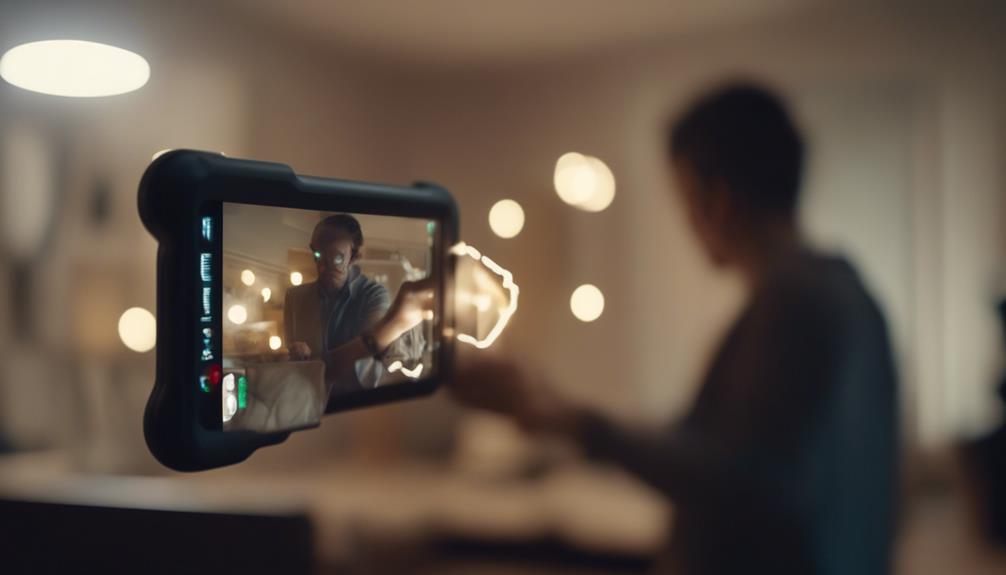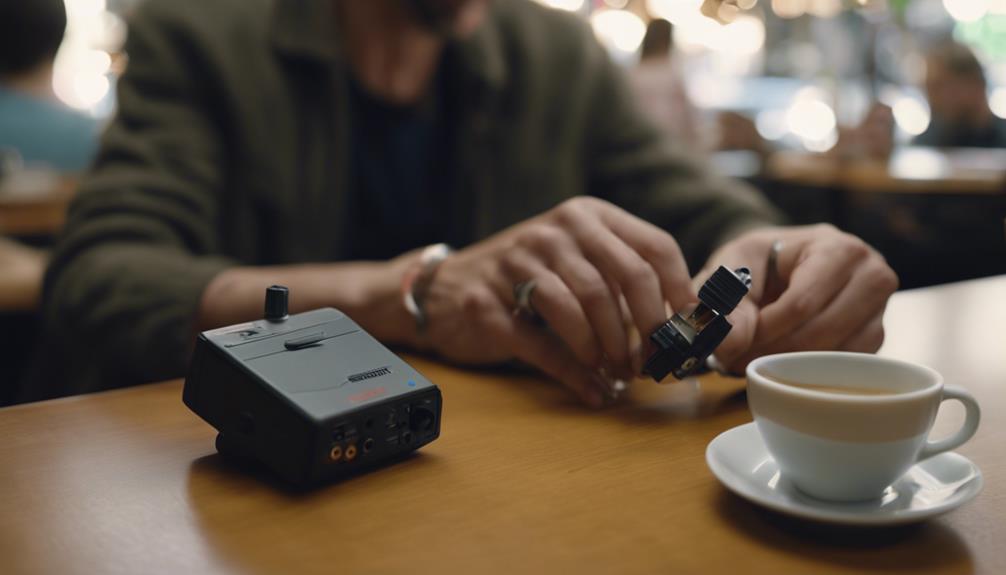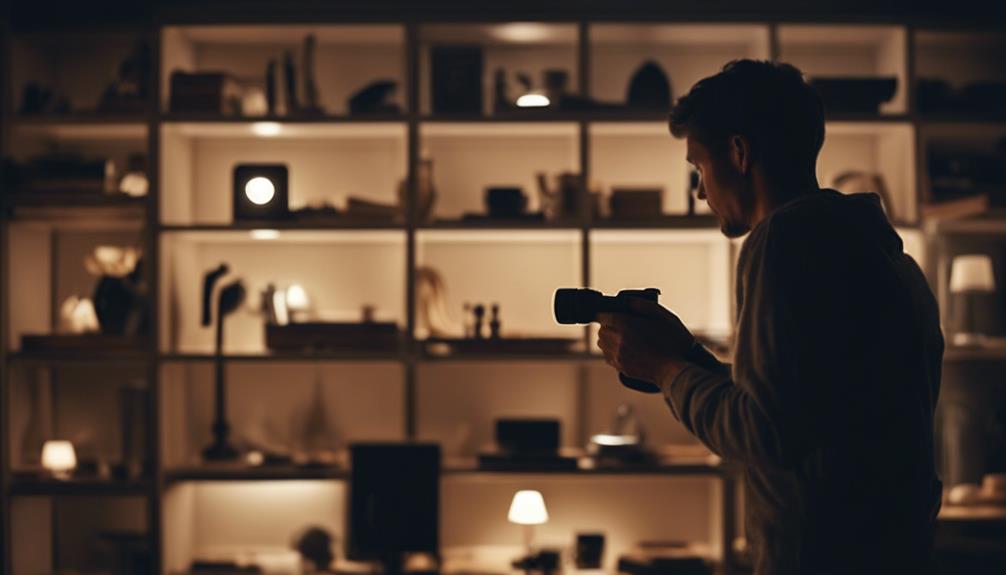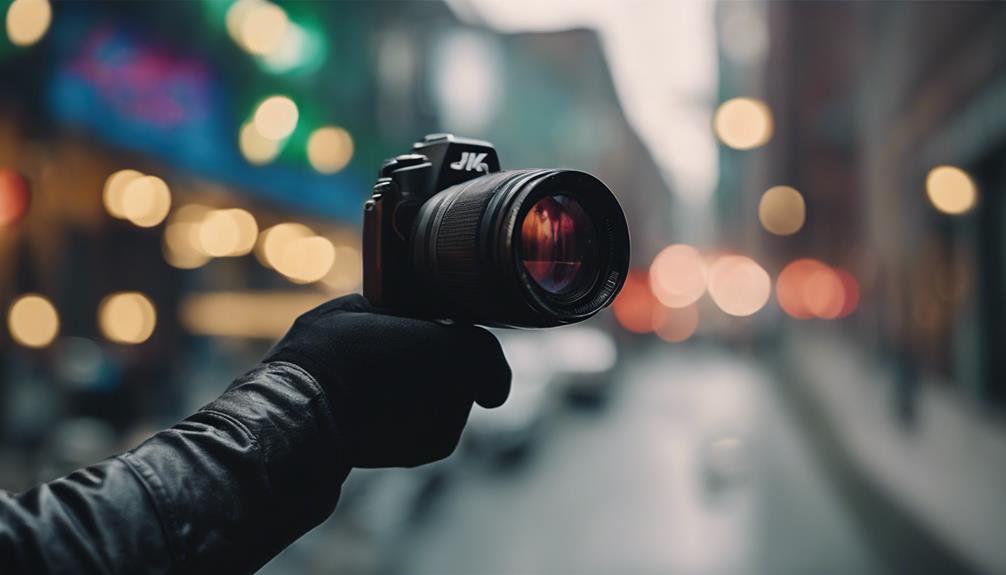To beat spy cameras, start with a visual sweep using a flashlight to spot any hidden devices. Use a camera detector to find covert surveillance equipment easily. Look out for unusual items like smoke detectors that may conceal cameras. Place objects strategically to block camera views, like curtains or rearranged furniture. Consider using signal jammers to disrupt surveillance transmission. Install anti-spy devices such as hidden camera detectors or white noise generators. Remember to understand your legal rights regarding surveillance. Combining these tactics will help protect your privacy effectively.
Detecting Hidden Cameras

To detect hidden cameras, start by conducting a thorough visual sweep of the area using a flashlight and paying close attention to any unusual objects or small lenses that may indicate surveillance devices. In cases of covert surveillance, it's essential to use a camera detector. These devices are designed to identify the presence of recording equipment by detecting radio frequencies or the reflections of camera lenses.
Apart from using specialized tools, observe the environment for any out-of-place items such as smoke detectors in unusual locations, decorative objects with tiny holes, or even exposed wiring that seems unnecessary.
When scanning a room, be systematic and start from one corner, moving methodically to cover every angle. Check common areas where cameras are often hidden, like behind mirrors, inside air vents, or even within electronic devices.
Blocking Camera Views
Use physical barriers strategically to block camera views without hindering your surroundings. When it comes to blocking camera views, understanding camera positioning is essential. Cameras are typically installed at eye level or in corners for best coverage. By identifying these common placements, you can strategically place objects to obstruct their view.
Consider rearranging furniture or adding decorative elements strategically to create a visual barrier between the camera and your private space. For example, tall potted plants, room dividers, or bookshelves can effectively block the line of sight without appearing out of place.
Additionally, utilizing curtains, blinds, or privacy screens can offer a quick solution to prevent privacy invasion. Make sure to keep them closed when you want to guarantee privacy within your space.
Using Signal Jammers

Strategically deploy signal jammers to disrupt surveillance devices and protect your privacy effectively. Signal interference is a powerful tool in your electronic defense arsenal, offering a proactive approach to surveillance prevention.
By utilizing signal jammers, you can impede the ability of spy cameras to transmit data, rendering them ineffective in capturing your personal information.
To maximize the effectiveness of signal jammers, consider the range and frequency of the devices you're targeting. Different signal jammers are designed to disrupt specific frequencies, so understanding the technology behind the spy cameras you're facing is essential.
Position the jammers strategically to create an interference zone that blankets the area you want to protect.
Privacy protection is at the core of using signal jammers. These devices act as a shield against unwanted surveillance, giving you the upper hand in controlling your personal information.
When used thoughtfully and judiciously, signal jammers can be a potent tool in safeguarding your privacy in an increasingly surveilled world.
Installing Anti-Spy Devices
Consider integrating a wide range of anti-spy devices to strengthen your defenses against covert surveillance. When it comes to counter surveillance and privacy protection, installing these devices strategically can greatly enhance your security measures.
Start by placing hidden camera detectors in key areas of your home or office. These detectors can alert you to the presence of spy cameras transmitting signals, allowing you to locate and disable them promptly.
Another essential anti-spy device is a radio frequency (RF) signal detector. RF detectors can identify wireless signals emitted by surveillance devices, enabling you to pinpoint their exact locations.
Additionally, consider using white noise generators to obscure conversations and thwart audio recording devices. These devices emit random sounds that interfere with microphones, safeguarding your privacy during sensitive discussions.
Furthermore, installing infrared LED lights can help disrupt night vision cameras by overwhelming their sensors with bright light, rendering them ineffective.
Conducting Physical Inspections

To enhance your overall security measures against covert surveillance, the next step involves conducting thorough physical inspections to detect any potential spy cameras or surveillance devices in your surroundings.
Begin by performing a detailed security sweep of the area you suspect might be under surveillance. Look for any unusual or out of place items such as smoke detectors, wall clocks, or even USB chargers, as these are common disguises for spy cameras. Pay close attention to areas where cameras could be hidden discreetly, like behind mirrors, inside air vents, or within decorative objects.
Utilize your knowledge of surveillance technology to identify any suspicious signs such as small lenses, blinking lights, or unusual wires that don't seem to belong. Remember that spy cameras can be as tiny as a pinhole, making them challenging to detect without a thorough inspection.
Make sure to check all possible angles and corners in the room, as well as areas where cameras could have a clear line of sight. Conducting physical inspections regularly can greatly increase your chances of discovering and removing any unauthorized surveillance devices from your premises.
Understanding Legal Rights
Make sure that you're aware of your legal rights when it comes to protecting your privacy and security from potential surveillance threats. Understanding privacy laws and surveillance rights is essential in safeguarding yourself against invasive spy cameras. Privacy laws vary by jurisdiction, so it's vital to research and comprehend the regulations specific to your location. These laws dictate how your personal information can be collected, stored, and used, including restrictions on video and audio recordings in private spaces.
Surveillance rights grant you certain protections against unauthorized monitoring and recording. Familiarize yourself with what constitutes illegal surveillance, such as capturing footage in areas where there's a reasonable expectation of privacy, like bathrooms or changing rooms. Additionally, be aware of any consent requirements for recording conversations or video in different settings.
Conclusion
To sum up, through vigilance and proactive measures, you can effectively protect your privacy and outsmart spy cameras.
Whether it's detecting hidden cameras, blocking their views, using signal jammers, installing anti-spy devices, conducting physical inspections, or understanding your legal rights, there are various strategies you can employ to safeguard yourself from unwanted surveillance.
Stay informed, stay alert, and take the necessary steps to guarantee your privacy remains intact.


